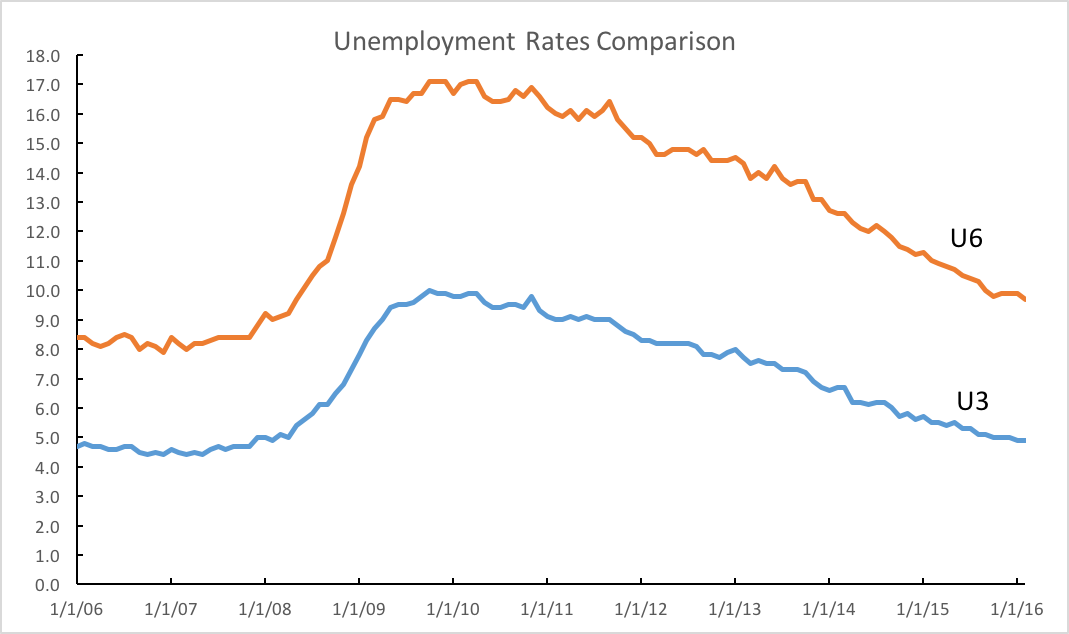This morning the Bureau of Labor Statistics released its monthly Employment Situation Summary. The unemployment rate remained at 4.9%. I was reading MoneyBeat blog at the Wall Street Journal. The following quote (posted at 8:45 AM) caught my attention.
U-6 includes everybody, and that rate is at 9.7%. That is a high number for a purported recovery that is nearly six years old. You want to know why Bernie Sanders and Donald Trump are getting as much traction as they are? Look at that U-6 rate. Paul Vigna – Reporter, The Wall Street Journal
I thought I would look at the numbers and see if there was any justification to the claim. I ran a simple timeseries comparing the official unemployment rate (U3) with the U6 rate Mr. Vigna referenced. U6 is the broadest unemployment rate calculated by the BLS encompassing total unemployed, plus all persons marginally attached to the labor force, plus total employed part time for economic reasons, as a percent of the civilian labor force plus all persons marginally attached to the labor force.

I agree with Mr. Vigna’s implication that the “purported recovery” is anemic. However, it does not appear that the U6 rate has performed demonstrably differently from the official unemployment rate. The two series mirror themselves very closely. So in so far as candidates Sanders and Trump are benefiting from the post Great Recession economy it is not discouraged workers and others who are marginally attached to the economy who are providing the boost.
I am sure that there is a strong economic component to the Sanders / Trump phenomenon. One way to measure this change is the decrease in labor force participation that has occurred during the recovery. The labor force participation rate was in excess of 66% prior to the Great Recession the figure released today is a mere 62.9%. It is certainly possible that both Sanders and Trump are pulling from this disgruntled group that have dropped out of the labor force.
 Bert Wheeler
Bert Wheeler
 Jeff Haymond
Jeff Haymond
 Marc Clauson
Marc Clauson
 Mark Caleb Smith
Mark Caleb Smith
 Tom Mach
Tom Mach